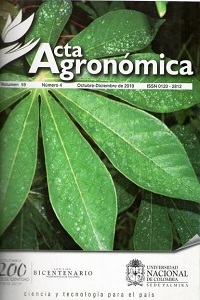Dinámica del nitrógeno y el fósforo del suelo bajo tres sistemas de uso de la tierra en laderas de Honduras
the Quesungual Slash and Mulch Agroforestry System (QSMAS) on the dynamics of soil nitrogen (N) and phosphorus (P), and their impact on QSMAS’ productivity in southwestern Honduras, Central America. Five land use systems were compared: (l) Slash-and-burn traditional system; (2, 3 and 4) QSMAS of <2, 5-7 and >lO years old, respectively; and (5) Secondary forest. Local practices were applied to produce maize Zea mays, and bean Phaseolus vulgaris, with (101 kg N + 55 kg P /ha for maize, 46 kg N + 51 kg P /ha for bean) and without addition of fertilizers. Measurements included decomposition and nutrient release from biomass, aerobic mineralization of N, sequential fractionation of +, size-density fractionation of soil organic matter, and crop yield. Similarities in N dynamics indicate that QSMAS and slash-and- burn system were equally effective in providing N, although in QSMAS it is also result of a biologically mediated process. P pools in QSMAS were more dynamic and favorable by reducing their flows towards unavailable forms. Based on nutrient availability and grain yields over time, QSMAS could be a suitable option to replace the slash-and-burn system in smallholder agroecosystems.

